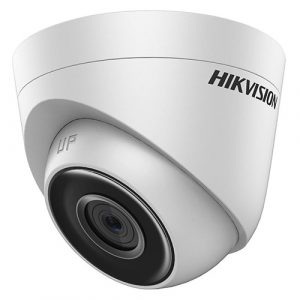An IP camera or Internet Protocol camera is a camera that can transfer its recording to a device connected to it via the internet. Unlike the analog closed-circuit television cameras that needs to be wired, these cameras are functional over the internet. These are basically webcams. But the term IP cameras are used to refer to only those cameras which are used for surveillance. Thus IP cameras are a type of CCTV cameras whose footages are accessible over an internet connection.
So how does an IP camera work? Here is the detailed description of it’s mechanism.
An IP camera transmits video over a data connection: ethernet, USB, WiFi, etc. Everything required to compress and encode video and transmit it wirelessly is built into the camera. The camera is directly connected to the network like a network printer or scanner. The camera may store the video captured in an attached memory device, connect to an external memory device over the internet or directly stream captured video over the internet.
In case you have a building which already has network connection and you need to affix one or two cameras only, you may choose to buy a decentralized camera which has its own control interface and storage medium built-in. When you are installing a complete setup with multiple cameras, it is suggested to use centralized IP camera systems which comes with an NVR. An NVR is similar to a DVR except for the fact that while a DVR is responsible for encoding and compressing the video captured from the connected cameras, NVR only stores the video captured and allows for viewing of the footage. NVR software can be installed on a dedicated device or a computer. Hybrid systems or XVR are also available that can be connected to both analog cameras and IP cameras simultaneously.
Also in order to access the IP cameras consistently over the internet, you need a static IP address and the internet service provider usually charge a monthly fee for this service.
IP cameras have several benefits over the analog cameras. Some of them are discussed here. IP camera allows two-way audio signals to be sent and received over the device. This is useful in places such as gas station clerk using the same for instructing customers on how to use pay pumps. Video analytics can be placed inside the camera to analyze images. Data transmission is secure using authentication methods such as WPA, WPA2, TKIP and AES encryption. However, wireless cameras are prone to hacking because the data is sent over the internet and if the security is not strong enough a trained hacker can easily get access to the streaming.
The following is a popular IP Dome camera by Hikvision. The specifications are
HIKVISION 1.0 MP CMOS NETWORK TURRET CAMERA

1/4″ progressive scan CMOS
Up to 1.0 megapixel
.8mm/4mm/6mm fixed focal lens
Up to 30 m IR range
Dual stream
Digital WDR (Wide Dynamic Range)
3D DNR (Digital Noise Reduction)
PoE (Power over Ethernet)
IP67
Mobile monitoring via Hik-Connect or iVMS-4500
The price of the above camera in INR is 2700.





